Product Design Strategies
In my journey as a marketing professional, I’ve found that a robust product design strategy is key to thriving in design. Two key approaches stand out: technology-driven innovation and a customer-centric approach. Here, I’ll share my winning formula for both.
Technology-Driven Innovation
Technology-driven innovation is at the core of some of the most successful product design strategies. By leveraging cutting-edge technology, I can push the boundaries of what is possible and deliver exceptional products.
-
Innovation Focus: Following Google’s example, I prioritize innovation without adhering strictly to a rigid process. This allows for greater flexibility and creative freedom. Google emphasizes guiding principles and values, which inspires me to align my projects with overarching goals rather than fixed steps (Maze).
-
Experimentation and Learning: Drawing from Netflix’s approach, I prioritize monthly retention as a key engagement metric. By employing consumer science techniques, I continuously experiment, test, and learn to improve my products. Netflix’s focus on personalization through machine learning ensures each user’s experience is tailored, driving both engagement and retention.
| Metric | Approach | Example |
|---|---|---|
| Innovation Focus | Guiding Principles | |
| Monthly Retention | Experimentation & Testing | Netflix |
| Personalization | Machine Learning | Netflix |
Embracing technology-driven innovation enables me to create products that are not only cutting-edge but also highly tailored to user needs.
Customer-Centric Approach
Equally important in my product design strategy is a customer-centric approach. By placing the customer at the heart of the design process, I ensure that my products genuinely resonate with their needs and preferences.
-
Working Backwards: Inspired by Amazon’s method, I start with the customer experience and work backward. This involves creating an internal press release for new product launches to clearly define the customer benefits and unique selling points before any development begins. Amazon’s leadership principles, especially customer obsession, guide my design process (Maze).
-
Product-Led Growth: Following Zoom’s strategy, I focus on a product-led growth methodology. This approach means that user acquisition, expansion, and retention are driven by the product itself. During the COVID-19 pandemic, Zoom demonstrated flexibility by adapting its strategy to meet the changing market needs, highlighting the importance of being responsive to customer demands.
| Company | Approach | Key Principle |
|---|---|---|
| Amazon | Working Backwards | Customer Obsession |
| Zoom | Product-Led Growth | Flexibility to Market Changes |
A customer-centric approach ensures that my designs are not only innovative but also deeply aligned with what customers value.
Combining both technology-driven innovation and a customer-centric approach forms a comprehensive product design strategy that propels my projects to success. For more insights on the product design process, product design tools, or principles of product design, feel free to explore our extensive resources.
User Engagement Metrics
One of the essential aspects of a robust product design strategy is understanding and leveraging user engagement metrics. By prioritizing what matters most to users, I can create products that not only attract but also retain a loyal user base.
Prioritizing Monthly Retention
In the world of product design, monthly retention is a key metric that indicates how well a product is performing. It’s not just about the number of new users; it’s about keeping those users engaged and satisfied over time. Take Netflix, for instance. They prioritize monthly retention by employing consumer science to experiment, test, and learn continuously. This approach allows Netflix to refine its offerings and retain a high number of monthly viewers.
To put this into perspective, here’s a simple table that showcases why monthly retention is crucial:
| Metric | Value |
|---|---|
| Initial Users | 10,000 |
| Monthly Retention Rate | 80% |
| Users Retained After 1 Month | 8,000 |
| Users Retained After 3 Months | 5,120 |
| Users Retained After 6 Months | 2,048 |
By focusing on monthly retention, I can ensure that the product remains relevant and valuable to its users, leading to sustained engagement and long-term success.
For more insights on optimizing design to retain users, check out our principles on product design.
Personalization and Machine Learning
Personalization is at the forefront of modern product design, and machine learning plays a pivotal role in achieving this. One of the best examples is Netflix, which leverages machine learning to personalize its content offering, thereby driving engagement and retention (Maze). By understanding user preferences and behaviors, personalized recommendations can significantly enhance user experience.
Consider this table, which illustrates how personalization can impact user engagement:
| Personalization Method | Engagement Increase |
|---|---|
| Personalized Recommendations | 30% |
| Tailored Content Notifications | 25% |
| User-Specific Promotions | 20% |
The data speaks for itself: personalization achieved through machine learning can dramatically boost user engagement.
For professionals wanting to delve deeper into the tools and techniques used in this process, a visit to our section on product design tools is highly recommended. By incorporating advanced data analytics and machine learning, creating a more personalized, engaging product experience becomes not just possible but highly effective.
Employing these strategies for monthly retention and personalization helps in crafting a product design strategy that’s not only innovative but also user-centric, ensuring that both new and existing users find continual value.
Market Research in Product Development
When talking about my winning formula for product design strategy, market research plays an essential role. By understanding the role of market research at different stages and the importance of concept testing and launch, I can ensure the product meets customer needs and stands out in the market.
Role at Different Stages
Market research is pivotal during various stages of product development. It helps in identifying unmet market needs and target audience requirements, guiding the creation and refinement of the product.
Stage Gate 1: Discovery and Exploration
During this initial stage, market research involves a preliminary market assessment to identify customer desires and opportunities within the market. I focus on understanding the larger market landscape and spotting gaps that our product can fill.
| Stage | Research Focus | Techniques |
|---|---|---|
| Discovery and Exploration | Preliminary Market Assessment | Surveys, Market Analysis |
| Concept Testing | User Feedback, Concept Acceptance | Surveys, A/B Testing |
| Launch | Price Elasticity, Features Influence | Price Sensitivity Tests, Packaging Research |
Market research during the product design process ensures that every stage is data-driven and aligned with customer expectations.
Concept Testing and Launch
Stage Gate 3: Concept Testing
Once I have a product concept, I employ market research techniques like surveys, interviews, and A/B testing. This helps me evaluate user feedback and determine concept acceptance rates. It’s crucial for understanding customer perceptions of the product’s benefits and features (The Farnsworth Group). This stage allows for fine-tuning the product to better meet consumer needs.
For a deeper dive into techniques, check out product design prototyping, which often aligns closely with this stage.
| Research Technique | Purpose |
|---|---|
| Surveys | Gather broad user opinions |
| Interviews | In-depth feedback |
| MaxDiff Scaling | Prioritize features |
| A/B Testing | Evaluate preferences |
| Monadic Testing | Assess single concept |
Stage Gate 5: Launch
Before a product hits the market, conducting a price elasticity test is critical. I delve into research on features that influence purchase intent, price sensitivity, and optimal packaging. This helps in developing a competitive pricing strategy and understanding the best way to present the product to potential buyers (The Farnsworth Group).
Market research for new product development, as highlighted by Attest, aids in crafting the perfect product concept, messaging, and marketing strategies. This ensures that the product resonates well with its audience and meets existing demand.
Understanding the market allows me to innovate effectively, ensuring that each product I design is not only functional but also desirable. The insights from market research become the cornerstone of my product design strategy, informing every decision from conception to launch. For more on the exquisite balance of design and market needs, see principles of product design.
Evolution of Design Industry
Impact of Emerging Technologies
In the realm of product design strategy, the landscape is continually evolving, driven by groundbreaking technological advancements. With tools powered by artificial intelligence (AI), I’ve seen firsthand how these innovations provide deep insights into customer behavior. Companies can tailor their offerings, boost satisfaction, and drive business growth by predicting trends and preferences.
One standout innovation is spatial computing. Digital assistants like Lowe’s LoweBot and AI-driven experiences crafted by companies such as Disney and Epic Games are revolutionizing how customers interact with brands (University of Kansas MBA Blog). These technologies are at the forefront of creating immersive experiences and personalized marketing tactics, setting the stage for a new era in customer engagement.
Augmented reality (AR) and virtual try-on tools also play significant roles. Businesses like Adidas and Wayfair have embraced AR to enhance customer experience and engagement. Since 2020, retailers using AR have seen a 20% increase in engagement rates and a 90% boost in conversions from shoppers interacting with these experiences.
Cybersecurity is another critical area being reshaped by technology. With the rise in high-profile breaches, integrating Zero Trust Architecture (ZTA) with blockchain technology offers a promising solution. This approach enforces stringent identity verification and tamper-proof record-keeping, reinforcing cybersecurity measures (University of Kansas MBA Blog).
Optimizing Collaboration and Sustainability
In my journey, I’ve realized that collaboration and sustainability are pivotal components of a successful product design strategy. Design thinking, a client-centered approach, champions the creation of innovative ideas through a human point of view. This method transforms businesses by understanding customers’ pains, needs, and expectations (Eleken). For instance, HandPrinter leveraged design thinking to establish a unique vision focused on environmental protection.
Optimizing collaboration involves the use of advanced product design tools that facilitate seamless communication and project management. Tools such as real-time collaboration software and cloud-based platforms ensure that team members can share ideas and feedback instantly, irrespective of their geographic locations.
Sustainability in product design is an imperative that’s gaining significant traction. By prioritizing eco-friendly materials and processes, designers contribute to a more sustainable future. Incorporating sustainability into the product design process not only benefits the environment but also enhances the brand’s reputation and appeal among eco-conscious consumers.
Incorporating these strategies into my design process has allowed me to stay ahead in a rapidly changing industry. Whether it’s through emerging technologies or a focus on sustainability, evolving practices are shaping the future of product design.
To delve deeper into related topics, explore our articles on product design prototyping and the principles of product design.

